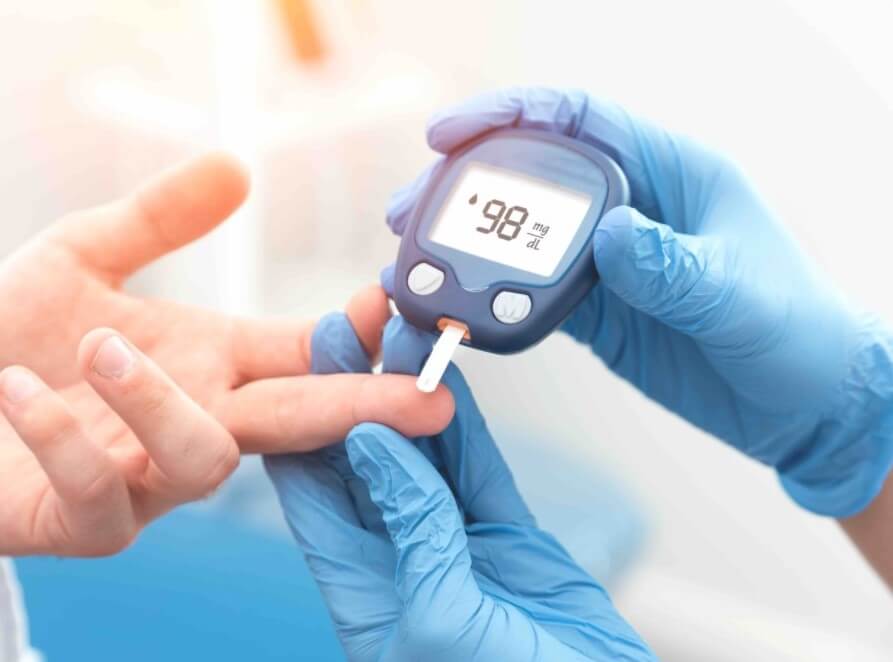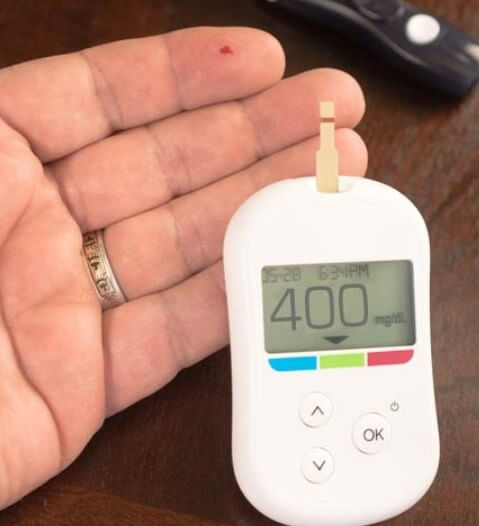What are symptoms for high blood sugar: High blood sugar, or hyperglycemia, is a condition not to be underestimated. Let’s explore the topic together with the expert of the Pavia City Care Institute.
By glycaemia we mean the amount of glucose present in the blood (the main energy substrate of our body). When the levels of the latter are high (hyperglycemia) there is the risk of developing important diseases, including diabetes.
Hyperglycemia and its possible causes
The normal value of fasting glucose is maintained between 70 and 100mg / dl . We talk about hyperglycemia when there is a rise in blood glucose which can lead to negative consequences on our health.
If the glycaemia determined on a blood sample, fasting and in conditions of tranquility, is confirmed> 126mg / dl on two different occasions, then it is possible to diagnose Diabetes mellitus .
Diabetes mellitus is a chronic disease burdened by complications, resulting from a reduced production of insulin or to an inadequate function of the latter.
Transient hyperglycemia
There are transient cases of “stress” hyperglycemia: they are found in the course of serious pathologies such as heart disease of the infarct type, infectious or post-surgical problems .
Hyperglycemia from the use of drugs
Hyperglycemia can also be a consequence of taking certain drugs with a hyperglycemic effect such as:
- steroids;
- beta blockers;
- antipsychotics.
High blood glucose can also be caused by the lack or inadequate intake of hypoglycemic drugs or insulin in diabetic subjects .
In the latter, hyperglycemia can derive from physiological hormonal fluctuations such as the sunrise and / or sunset effect or be a “rebound” effect following a condition of hypoglycemia.

Secondary hyperglycemia
Finally, it must be said that hyperglycemia can be secondary to:
- pancreatic diseases (pancreatitis, oncological problems);
- endocrinological pathologies (hyperthyroidism, hypercorticadrenalism, acromegaly).
Hyperglycemia to monitor
Other conditions of dysglycemia that are important because they identify subjects at risk of developing diabetes and cardiovascular disease are:
- fasting hyperglycemia ( fasting blood sugar between 100 and 125 mg / dl);
- The impaired glucose tolerance (glucose> 200 mg / dl two hours after a 75g oral glucose load).
They must be identified and treated, because with proper prevention it is possible to slow down the onset of diabetes. The main cause of hyperglycemia in the world today is the excessive consumption of carbohydrates , often accompanied by a sedentary lifestyle, obesity, stress and a disordered lifestyle.
The main symptoms of hyperglycemia
Hyperglycemia is often asymptomatic or poorly symptomatic . The classic disorders of increased diuresis (polyuria) and consequently of thirst (polydipsia) or involuntary weight loss generally appear for elevated and prolonged values of hyperglycemia.
More often, hyperglycemia is accompanied by:
- fatigue;
- abdominal pain;
- sudden mood swings ranging from short temper to depression;
- appearance of skin lesions such as dark spots on the legs;
- redness of the face;
- dry skin;
- difficult wound healing.
These symptoms, as well as sexual problems in both men and women (erectile deficit, vaginal dryness, painful sexual intercourse), are further alarm bells.
Much more often, diabetes is diagnosed as a result of sudden loss of vision, blurred vision, or difficulty focusing on nearby objects.
Neurological symptoms can worsen from weakness, extreme tiredness, drowsiness to mental confusion and loss of consciousness (coma) with worsening glycemic values.

The importance of periodic checks
The subtle way of presenting itself and proceeding means that diabetes is belatedly diagnosed, underestimated and neglected. This can lead to the development of both cardiovascular and ocular, renal, vascular and neurological complications over the years.
It is for this reason that in subjects at risk (familiarity with diabetes, obese, sedentary, with previous gestational diabetes), periodic blood glucose monitoring on venous blood sampling is recommended (at least annually if the values remain within the limits). Otherwise, screening from the age of 45 is recommended.
The solution to glycemic problems lies in the willingness of each of us to adopt a healthy lifestyle. It is good practice:
- follow a balanced diet, adequately balanced in its components (Mediterranean diet);
- carry out moderate but regular physical activity and pursue it consistently;
- achieve and maintain a healthy weight;
- abolish junk food (sugary drinks, high calorie foods, fast food);
- drink alcohol moderately;
- avoid smoking.
High blood sugar: the role of insulin
Physiologically, the human body is equipped with a self-regulation system that allows you to maintain constant blood sugar levels throughout the day. Thanks above all to certain hormones capable of increasing or decreasing blood glucose concentrations depending on the occurrence.
Among these, a crucial importance is given by insulin (hormone produced by the pancreas) which is a hypoglycemic agent . This has the purpose of favoring the introduction of glucose into the cells and therefore lowering its concentration in the blood.
When this automatism gets jammed, high blood sugar and therefore diabetes are reached .
In particular, when the body stops producing insulin (for example) you have type 1 diabetes , if instead it does not work properly, type 2 diabetes occurs .
Check your glucose levels to monitor your blood glucose values
Blood glucose levels fluctuate constantly throughout the day.
Basically, a healthy person should have between 65 and 110 mg / dL of glucose in the blood fasting; starting from 90-130 mg / dL of glucose, care must be taken because high blood sugar is risky even if you do not have diabetes.
After meals, however, you must not have glycemic values higher than 180 mg / dL (within one – two hours).
Adolescents and adults with diabetes must keep blood glucose values before meals within 80-150 mg / dL, but it is always advisable to consult a specialist doctor to understand what your optimal blood glucose values are.
HOW TO KEEP HIGH GLUCOSE AT BAD

One means we all have at our disposal to keep blood sugar at bay is to look after our diet. We can put on the table especially foods with a low glycemic index (GI) so that blood glucose levels do not suffer peaks and subsequent collapses.
The scale with which foods are classified according to their effect on blood sugar goes from 0 to 100, the higher the value of a food and the greater the increase in blood sugar it produces after taking it. In case of high blood sugar, it is better to avoid foods that have a GI of 70 and up. Some common examples are white bread and potatoes.
Without exaggerating, foods with a moderate glycemic index should be eaten, including brown rice and cheeses.
Foods with a score from 0 to 54 can be eaten with confidence. These include eggs, various vegetables, some types of fruit, legumes and more.
Don’t miss: what is the best drink for high blood pressure?
The risks of high blood sugar ( hyperglycemia )
When the blood glucose concentration remains high for too many hours it can lead to dehydration and other related serious consequences. Even mild hyperglycemia, if continued over time because it is not diagnosed, can damage the body: the kidneys, the brain, the arteries.
In case of high blood sugar it is also important to check for ketones in the urine. If so, it is important to contact a doctor immediately.
The risk is to get a condition known as diabetic ketoacidosis or diabetic coma, which can be life-threatening.
If your blood sugar is constantly high , for several days or weeks (over 165 mg / dL) you are probably in the presence of diabetes and you need to take action for a cure.
Other diseases related to high blood sugar are cancer and Alzheimer’s
What to eat with high blood sugar
High blood sugar . (nd) i n Wikipedia
“The threshold value beyond which we can speak of high blood sugar or hyperglycemia is 126-140 milligrams per deciliter (mg / dl) of fasting blood. Between 110 and 125 milligrams there is a situation to keep under control “
Since glucose is essentially introduced into the body with food, the first step to control high blood sugar is certainly to opt for the right diet. Generally this must be between 1500 and 1900 Kcal per day essentially derived from fibers (green leaves), vegetables and fresh fruit (in moderation because they are sugary).
To limit in quantity, but not to completely eliminate carbohydrates .
It is true that these are mainly responsible for the amount of glucose that they take, but their glycemic index can vary for many factors.
Furthermore, bread and pasta are complex carbohydrates and therefore, although with a high glycemic index, they do not give a peak, but gradually release sugar into the blood.
NB ⇒ Any diet must be seen specifically with a specialist doctor.
In addition, it will be important that the individual gives a cut to a sedentary lifestyle, and that he keeps moving, thus carrying out regular physical activity.
It being understood that a correct diet cannot replace the drug therapy possibly prescribed by the doctor.
A person with high blood sugar levels can still act by avoiding foods such as white bread, honey, dried fruit (which will be taken occasionally), baked and fried potatoes, crackers, cornflakes, arborio rice, and sugar.
Foods such as bananas, grapes, and carrots should be eaten in moderation , while the light is green for foods such as plums, yogurt, low-fat milk, peas, soy milk, salmon, legumes, whole grains, vegetables, and so on.
Beware of packaged fruit juices, as they are very often rich in added sugars.
How to fight high blood sugar: is everything clear now?

In general, therefore, avoid taking those foods that have the addition of sugar.
The subject should avoid foods that are high in carbohydrates, and choose those that trigger a low insulin response.
Preferably foods such as fruits and vegetables, cereals and complex carbohydrates that are high in fiber.
Are there 100% natural supplements that counteract high blood sugar?
The answer is YES, the 100% NATURALOAD Natural Supplement!
NaturaLoad ingredients?
Our work was to put together, in a balanced way, 3 molecules that already alone have a natural power to improve insulin sensitivity, lower cholesterol and act as antioxidants.
What are these molecules?
L ‘ alpha-lipoic acid in the form R (R-ALA)
It is a natural molecule that has very important properties in the metabolism of animals (including humans). It occurs naturally in certain foods such as potatoes, spinach, broccoli, carrots, beets and red meat, and is produced by the body in small quantities.
One of the most interesting effects of this active ingredient (in its R form) is the ability to improve the insulin sensitivity of tissues, especially muscles and liver. This means that it stimulates the ability of these tissues to absorb glucose, favoring and speeding up the return of blood sugar to normal levels after taking meals containing medium-high doses of carbohydrates;
How to get several advantages:

As we have said, the blood sugar stabilizes faster and more efficiently. This limits the metabolic damage caused by high blood sugar and helps to preserve insulin sensitivity over time. This aspect is also very important for those who already have a slightly lower insulin sensitivity.
Berberine
It is a bioactive compound derived from the extraction from different plants such as Berberis.
berberine
Many scientific studies have shown that this natural extract has an efficacy approaching that of a drug. In fact, it has long been used by traditional Chinese medicine, where it is used to treat various ailments.
Today, modern science has confirmed its positive effects, and the most established American supplement companies have already begun to market it.
In Italy we are still in its infancy, but in the United States, for example, many cardiologists, diabetologists, endocrinologists and nutritionists are prescribing it with good results.
Today it is compared to the effects of a famous hypoglycemic drug, namely metformin .
Chromium Picolinate
It is a mineral that, among its various functions, acts as a cofactor for insulin receptors, that is, it is essential for the correct functioning of the receptors.
Watch the video explaining our supplement.
Frequent questions
Who can’t use it?
Who suffers from hypoglycemia or who does not eat carbohydrates.
Do I have to play sports to use it?
No, but of course we recommend everyone to do activities.
Advice for use?
If you have a meal containing at least 60 grams of carbohydrates (equivalent to about 80g of raw rice / pasta and 100g of white bread); we recommend using 2 NaturaLoad capsules about 10 minutes before a meal.
If you have a meal containing between 30 and 60 grams (equivalent to about 50g of raw rice / pasta and 65g of white bread); we recommend using a NaturaLoad capsule about 10 minutes before a meal.
What are the advantages and benefits?
After taking meals containing medium to high amounts of carbohydrates, blood sugar is stabilized more quickly and more efficiently, decreasing the risk of carbohydrates being converted into fat, and also limiting the metabolic damage caused by hyperglycemia .
If you liked the post about What are symptoms for high blood sugar you can share it on your favorite social networks (Twitter, Facebook, etc.…), ← you have different icons to click. Every day there will be new recipes and tricks for you, Follow us on Facebook @buzzrecipes12Share
What are symptoms for high blood sugar

